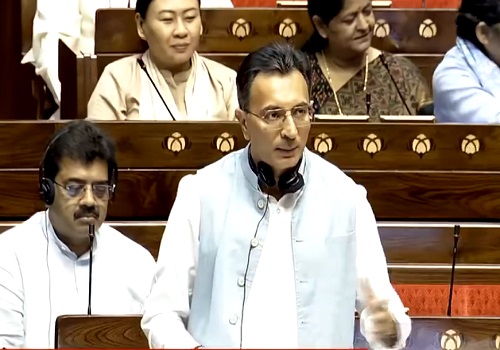Strong signalling impact to deter growth in consumer credit

Follow us Now on Telegram ! Get daily 10 - 12 important updates on Business, Finance and Investment. Join our Telegram Channel
There has been a sharp growth in unsecured lending in the past few years and the unsecured personal loan portfolio of the banking system has more than doubled from Rs 6 trillion in FY19 to Rs 13 trillion currently. Credit cards have grown at a faster pace, but off of a lower base, CLSA said in a report.
The RBI is indirectly telling banks to slow unsecured loans and credit cards, foreign brokerage, CLSA said in a report.
The RBI, on somewhat expected lines, increased the risk-weights on unsecured credit and bank loans to non-banking financial corporations (NBFCs). This was in response to its concern over the rapid growth in unsecured loans over the past four to five years, CLSA said.
This risk-weight increase is applicable to outstanding as well as fresh loans. We estimate the direct impact at a 40-80bp reduction in Tier I capital for banks and 230bp and 415bp reductions for Bajaj Finance and SBI Cards. However, even after that, banks are likely well capitalised and should not need to raise additional capital. The other direct impact would be an increase in the cost of borrowing for NBFCs (which is hard to quantify).
“We expect the indirect impact to be a moderation in unsecured loan growth for banks over the quarters to come,” CLSA said.
Care Edge Ratings said in a note that the personal loans as well as advances to NBFCs have been growing strongly and have been the primary driver of incremental bank credit.
“We see this as a strong signalling impact to deter growth in the unsecured space while lenders are well-capitalised to manage decrease in CRAR which is anticipated to be around 25-45 bps. Meanwhile, the proportion of bank lending to larger NBFCs could be pared down as they approach the capital market, while aggregate dependence of mid-sized NBFCs on the banking sector for funding is likely to remain high despite an anticipated increase in lending cost by 25-30 bps,” the note said.
Strong signalling impact to deter growth in consumer credit while banks well-capitalised to manage impact on CRAR, Care Edge Ratings said. Banks and larger NBFCs could witness a partial slow down, while Fintechs which operate in the comparatively higher yield segment too would likely see an impact on growth, the impact on margin would not be similar.
Soumya Kanti Ghosh, Group Chief Economic Adviser, State Bank of India, said in a report that the immediate impact of the enhanced risk weights is the excess capital now that banks would require. As per our calculation, the banking industry needs Rs 84,000 crore of excess capital 5 per cent increase on Rs 15.2 trillion capital requirement of banking system approx /55-60 bps increase in CRAR due to these regulatory measures.
Secondly, the RBI circular impacts consumer loans in general but excluding housing loans, education loans, vehicle loans and loans secured by gold and gold jewellery.
Filtering out the exclusions, the trends in consumer credit shows that it was growing at 25 per cent plus since May 2022. The share of these loans impacted by RBI circular (Rs 14.8 lakh crore) to total outstanding loan (Rs 151.5 lakh crore) is only around 9.8 per cent in September’23.
The impacted portion of the personal loans category is only 31 per cent of the total personal loans (Rs 48.3 lakh crore), Ghosh said.












 320-x-100_uti_gold.jpg" alt="Advertisement">
320-x-100_uti_gold.jpg" alt="Advertisement">










